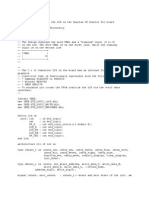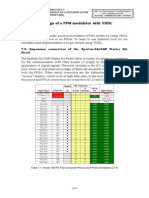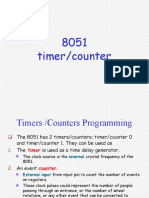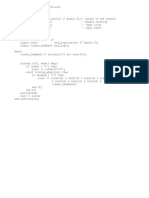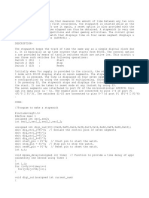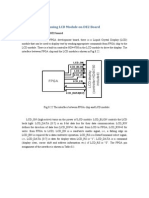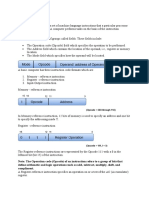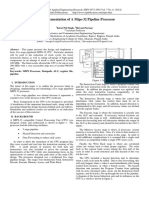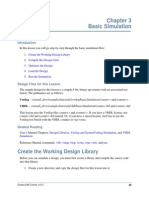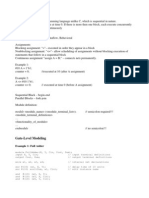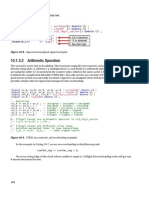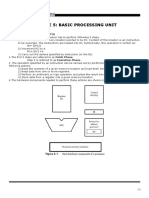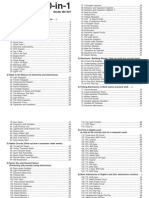0% found this document useful (0 votes)
693 views2 pagesDigital Clock in VHDL
This document describes a VHDL implementation of a digital clock. It includes the entity and architecture blocks. The architecture defines signals for each digit of the clock (hours ones, hours tens, minutes ones, etc.). It contains processes for each digit that use combinational logic to calculate the next state based on the current state and inputs. An additional process updates the actual digit values on each clock cycle based on the calculated next states.
Uploaded by
Tapas KolteCopyright
© Attribution Non-Commercial (BY-NC)
We take content rights seriously. If you suspect this is your content, claim it here.
Available Formats
Download as DOC, PDF, TXT or read online on Scribd
0% found this document useful (0 votes)
693 views2 pagesDigital Clock in VHDL
This document describes a VHDL implementation of a digital clock. It includes the entity and architecture blocks. The architecture defines signals for each digit of the clock (hours ones, hours tens, minutes ones, etc.). It contains processes for each digit that use combinational logic to calculate the next state based on the current state and inputs. An additional process updates the actual digit values on each clock cycle based on the calculated next states.
Uploaded by
Tapas KolteCopyright
© Attribution Non-Commercial (BY-NC)
We take content rights seriously. If you suspect this is your content, claim it here.
Available Formats
Download as DOC, PDF, TXT or read online on Scribd
/ 2






